Dongyang Li
Concept Based Continuous Prompts for Interpretable Text Classification
Dec 02, 2024
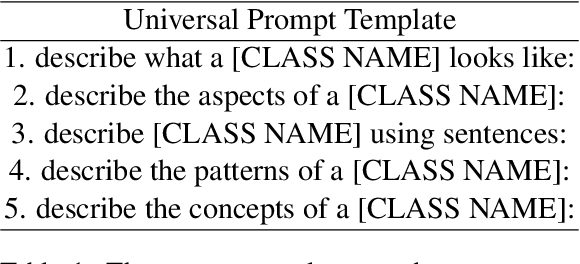
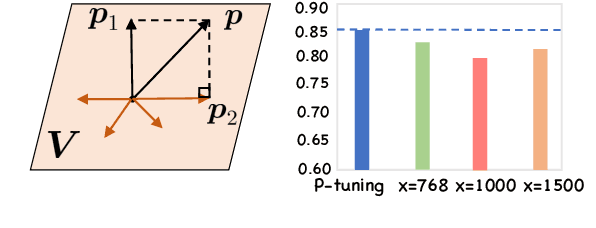
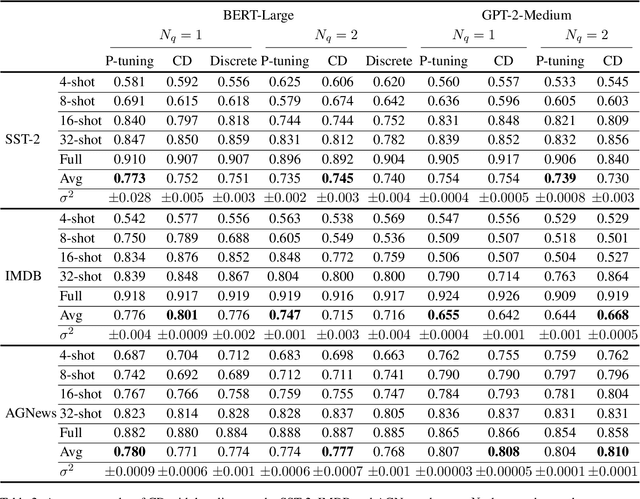
Abstract:Continuous prompts have become widely adopted for augmenting performance across a wide range of natural language tasks. However, the underlying mechanism of this enhancement remains obscure. Previous studies rely on individual words for interpreting continuous prompts, which lacks comprehensive semantic understanding. Drawing inspiration from Concept Bottleneck Models, we propose a framework for interpreting continuous prompts by decomposing them into human-readable concepts. Specifically, to ensure the feasibility of the decomposition, we demonstrate that a corresponding concept embedding matrix and a coefficient matrix can always be found to replace the prompt embedding matrix. Then, we employ GPT-4o to generate a concept pool and choose potential candidate concepts that are discriminative and representative using a novel submodular optimization algorithm. Experiments demonstrate that our framework can achieve similar results as the original P-tuning and word-based approaches using only a few concepts while providing more plausible results. Our code is available at https://github.com/qq31415926/CD.
Multi-Objective Communication Optimization for Temporal Continuity in Dynamic Vehicular Networks
Nov 30, 2024Abstract:Vehicular Ad-hoc Networks (VANETs) operate in highly dynamic environments characterized by high mobility, time-varying channel conditions, and frequent network disruptions. Addressing these challenges, this paper presents a novel temporal-aware multi-objective robust optimization framework, which for the first time formally incorporates temporal continuity into the optimization of dynamic multi-hop VANETs. The proposed framework simultaneously optimizes communication delay, throughput, and reliability, ensuring stable and consistent communication paths under rapidly changing conditions. A robust optimization model is formulated to mitigate performance degradation caused by uncertainties in vehicular density and channel fluctuations. To solve the optimization problem, an enhanced Non-dominated Sorting Genetic Algorithm II (NSGA-II) is developed, integrating dynamic encoding, elite inheritance, and adaptive constraint handling to efficiently balance trade-offs among conflicting objectives. Simulation results demonstrate that the proposed framework achieves significant improvements in reliability, delay reduction, and throughput enhancement, while temporal continuity effectively stabilizes communication paths over time. This work provides a pioneering and comprehensive solution for optimizing VANET communication, offering critical insights for robust and efficient strategies in intelligent transportation systems.
Adaptive Genetic Selection based Pinning Control with Asymmetric Coupling for Multi-Network Heterogeneous Vehicular Systems
Nov 05, 2024

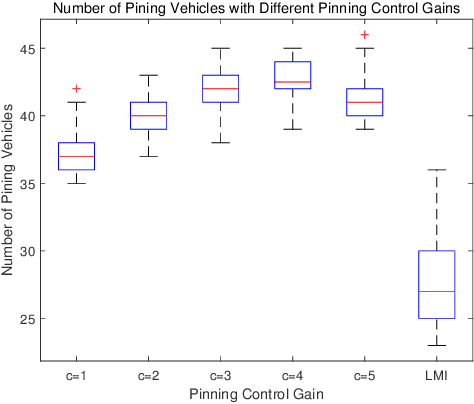

Abstract:To alleviate computational load on RSUs and cloud platforms, reduce communication bandwidth requirements, and provide a more stable vehicular network service, this paper proposes an optimized pinning control approach for heterogeneous multi-network vehicular ad-hoc networks (VANETs). In such networks, vehicles participate in multiple task-specific networks with asymmetric coupling and dynamic topologies. We first establish a rigorous theoretical foundation by proving the stability of pinning control strategies under both single and multi-network conditions, deriving sufficient stability conditions using Lyapunov theory and linear matrix inequalities (LMIs). Building on this theoretical groundwork, we propose an adaptive genetic algorithm tailored to select optimal pinning nodes, effectively balancing LMI constraints while prioritizing overlapping nodes to enhance control efficiency. Extensive simulations across various network scales demonstrate that our approach achieves rapid consensus with a reduced number of control nodes, particularly when leveraging network overlaps. This work provides a comprehensive solution for efficient control node selection in complex vehicular networks, offering practical implications for deploying large-scale intelligent transportation systems.
Signal Adversarial Examples Generation for Signal Detection Network via White-Box Attack
Oct 02, 2024



Abstract:With the development and application of deep learning in signal detection tasks, the vulnerability of neural networks to adversarial attacks has also become a security threat to signal detection networks. This paper defines a signal adversarial examples generation model for signal detection network from the perspective of adding perturbations to the signal. The model uses the inequality relationship of L2-norm between time domain and time-frequency domain to constrain the energy of signal perturbations. Building upon this model, we propose a method for generating signal adversarial examples utilizing gradient-based attacks and Short-Time Fourier Transform. The experimental results show that under the constraint of signal perturbation energy ratio less than 3%, our adversarial attack resulted in a 28.1% reduction in the mean Average Precision (mAP), a 24.7% reduction in recall, and a 30.4% reduction in precision of the signal detection network. Compared to random noise perturbation of equivalent intensity, our adversarial attack demonstrates a significant attack effect.
RealisDance: Equip controllable character animation with realistic hands
Sep 10, 2024Abstract:Controllable character animation is an emerging task that generates character videos controlled by pose sequences from given character images. Although character consistency has made significant progress via reference UNet, another crucial factor, pose control, has not been well studied by existing methods yet, resulting in several issues: 1) The generation may fail when the input pose sequence is corrupted. 2) The hands generated using the DWPose sequence are blurry and unrealistic. 3) The generated video will be shaky if the pose sequence is not smooth enough. In this paper, we present RealisDance to handle all the above issues. RealisDance adaptively leverages three types of poses, avoiding failed generation caused by corrupted pose sequences. Among these pose types, HaMeR provides accurate 3D and depth information of hands, enabling RealisDance to generate realistic hands even for complex gestures. Besides using temporal attention in the main UNet, RealisDance also inserts temporal attention into the pose guidance network, smoothing the video from the pose condition aspect. Moreover, we introduce pose shuffle augmentation during training to further improve generation robustness and video smoothness. Qualitative experiments demonstrate the superiority of RealisDance over other existing methods, especially in hand quality.
VideoQA in the Era of LLMs: An Empirical Study
Aug 08, 2024



Abstract:Video Large Language Models (Video-LLMs) are flourishing and has advanced many video-language tasks. As a golden testbed, Video Question Answering (VideoQA) plays pivotal role in Video-LLM developing. This work conducts a timely and comprehensive study of Video-LLMs' behavior in VideoQA, aiming to elucidate their success and failure modes, and provide insights towards more human-like video understanding and question answering. Our analyses demonstrate that Video-LLMs excel in VideoQA; they can correlate contextual cues and generate plausible responses to questions about varied video contents. However, models falter in handling video temporality, both in reasoning about temporal content ordering and grounding QA-relevant temporal moments. Moreover, the models behave unintuitively - they are unresponsive to adversarial video perturbations while being sensitive to simple variations of candidate answers and questions. Also, they do not necessarily generalize better. The findings demonstrate Video-LLMs' QA capability in standard condition yet highlight their severe deficiency in robustness and interpretability, suggesting the urgent need on rationales in Video-LLM developing.
On the Role of Long-tail Knowledge in Retrieval Augmented Large Language Models
Jun 24, 2024
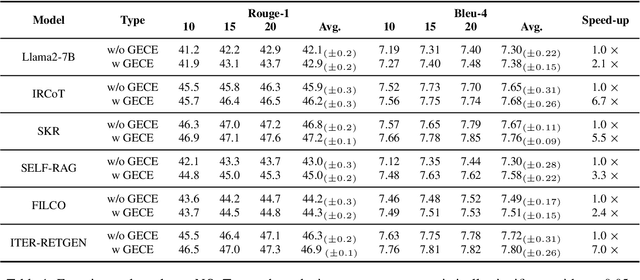
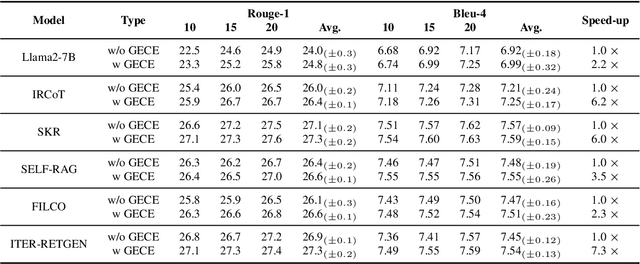
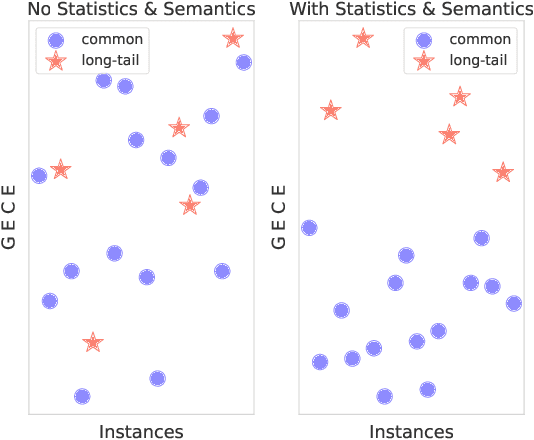
Abstract:Retrieval augmented generation (RAG) exhibits outstanding performance in promoting the knowledge capabilities of large language models (LLMs) with retrieved documents related to user queries. However, RAG only focuses on improving the response quality of LLMs via enhancing queries indiscriminately with retrieved information, paying little attention to what type of knowledge LLMs really need to answer original queries more accurately. In this paper, we suggest that long-tail knowledge is crucial for RAG as LLMs have already remembered common world knowledge during large-scale pre-training. Based on our observation, we propose a simple but effective long-tail knowledge detection method for LLMs. Specifically, the novel Generative Expected Calibration Error (GECE) metric is derived to measure the ``long-tailness'' of knowledge based on both statistics and semantics. Hence, we retrieve relevant documents and infuse them into the model for patching knowledge loopholes only when the input query relates to long-tail knowledge. Experiments show that, compared to existing RAG pipelines, our method achieves over 4x speedup in average inference time and consistent performance improvement in downstream tasks.
UniPSDA: Unsupervised Pseudo Semantic Data Augmentation for Zero-Shot Cross-Lingual Natural Language Understanding
Jun 24, 2024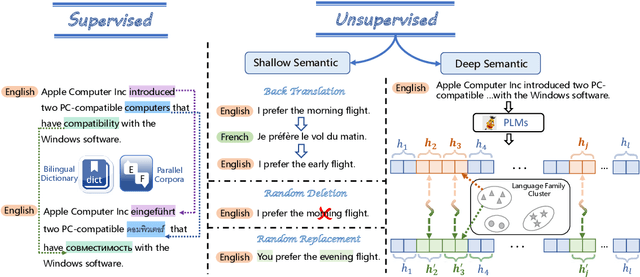
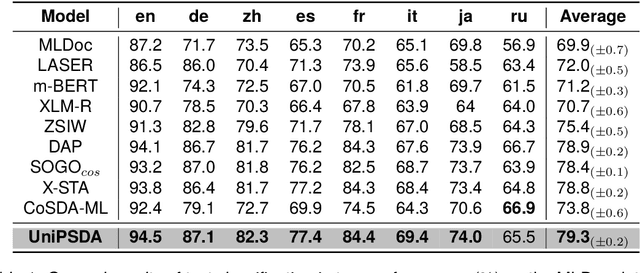
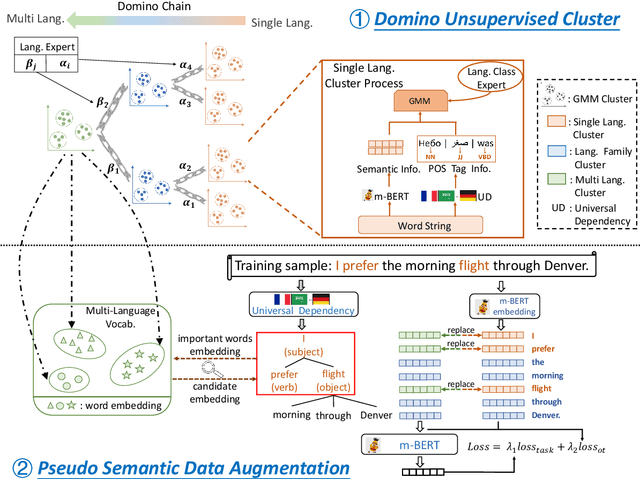
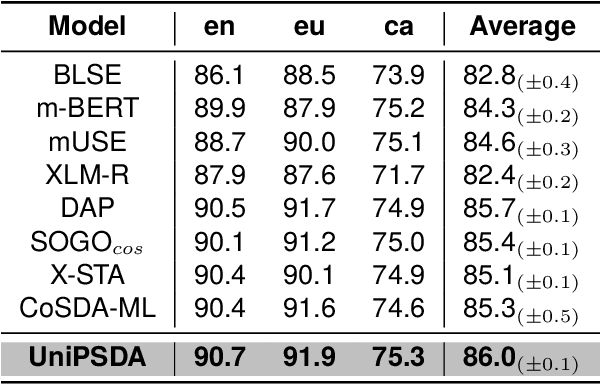
Abstract:Cross-lingual representation learning transfers knowledge from resource-rich data to resource-scarce ones to improve the semantic understanding abilities of different languages. However, previous works rely on shallow unsupervised data generated by token surface matching, regardless of the global context-aware semantics of the surrounding text tokens. In this paper, we propose an Unsupervised Pseudo Semantic Data Augmentation (UniPSDA) mechanism for cross-lingual natural language understanding to enrich the training data without human interventions. Specifically, to retrieve the tokens with similar meanings for the semantic data augmentation across different languages, we propose a sequential clustering process in 3 stages: within a single language, across multiple languages of a language family, and across languages from multiple language families. Meanwhile, considering the multi-lingual knowledge infusion with context-aware semantics while alleviating computation burden, we directly replace the key constituents of the sentences with the above-learned multi-lingual family knowledge, viewed as pseudo-semantic. The infusion process is further optimized via three de-biasing techniques without introducing any neural parameters. Extensive experiments demonstrate that our model consistently improves the performance on general zero-shot cross-lingual natural language understanding tasks, including sequence classification, information extraction, and question answering.
KEHRL: Learning Knowledge-Enhanced Language Representations with Hierarchical Reinforcement Learning
Jun 24, 2024Abstract:Knowledge-enhanced pre-trained language models (KEPLMs) leverage relation triples from knowledge graphs (KGs) and integrate these external data sources into language models via self-supervised learning. Previous works treat knowledge enhancement as two independent operations, i.e., knowledge injection and knowledge integration. In this paper, we propose to learn Knowledge-Enhanced language representations with Hierarchical Reinforcement Learning (KEHRL), which jointly addresses the problems of detecting positions for knowledge injection and integrating external knowledge into the model in order to avoid injecting inaccurate or irrelevant knowledge. Specifically, a high-level reinforcement learning (RL) agent utilizes both internal and prior knowledge to iteratively detect essential positions in texts for knowledge injection, which filters out less meaningful entities to avoid diverting the knowledge learning direction. Once the entity positions are selected, a relevant triple filtration module is triggered to perform low-level RL to dynamically refine the triples associated with polysemic entities through binary-valued actions. Experiments validate KEHRL's effectiveness in probing factual knowledge and enhancing the model's performance on various natural language understanding tasks.
DAFNet: Dynamic Auxiliary Fusion for Sequential Model Editing in Large Language Models
May 31, 2024



Abstract:Recently, while large language models (LLMs) have demonstrated impressive results, they still suffer from hallucination, i.e., the generation of false information. Model editing is the task of fixing factual mistakes in LLMs; yet, most previous works treat it as a one-time task, paying little attention to ever-emerging mistakes generated by LLMs. We address the task of sequential model editing (SME) that aims to rectify mistakes continuously. A Dynamic Auxiliary Fusion Network (DAFNet) is designed to enhance the semantic interaction among the factual knowledge within the entire sequence, preventing catastrophic forgetting during the editing process of multiple knowledge triples. Specifically, (1) for semantic fusion within a relation triple, we aggregate the intra-editing attention flow into auto-regressive self-attention with token-level granularity in LLMs. We further leverage multi-layer diagonal inter-editing attention flow to update the weighted representations of the entire sequence-level granularity. (2) Considering that auxiliary parameters are required to store the knowledge for sequential editing, we construct a new dataset named \textbf{DAFSet}, fulfilling recent, popular, long-tail and robust properties to enhance the generality of sequential editing. Experiments show DAFNet significantly outperforms strong baselines in single-turn and sequential editing. The usage of DAFSet also consistently improves the performance of other auxiliary network-based methods in various scenarios
 Add to Chrome
Add to Chrome Add to Firefox
Add to Firefox Add to Edge
Add to Edge